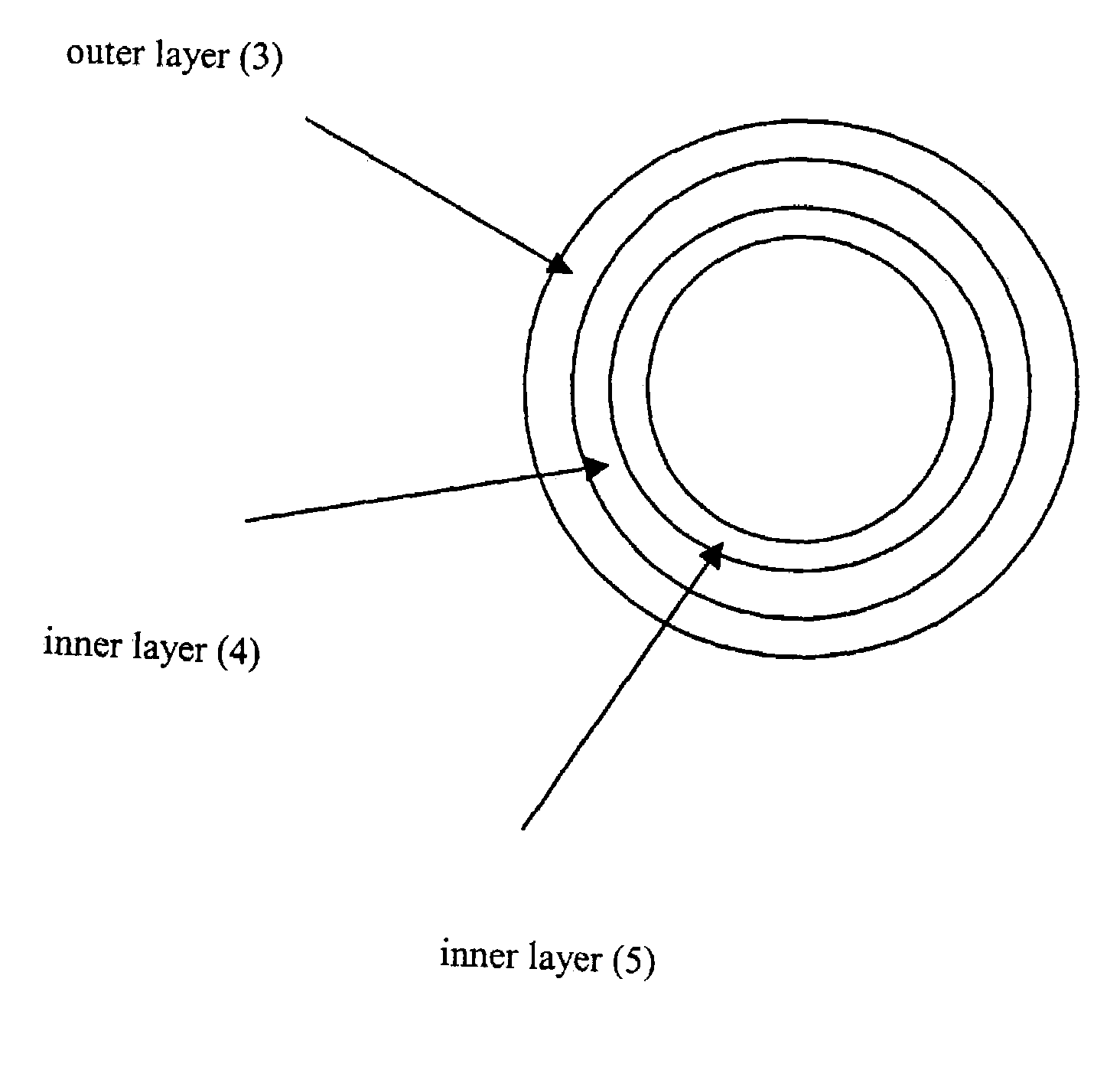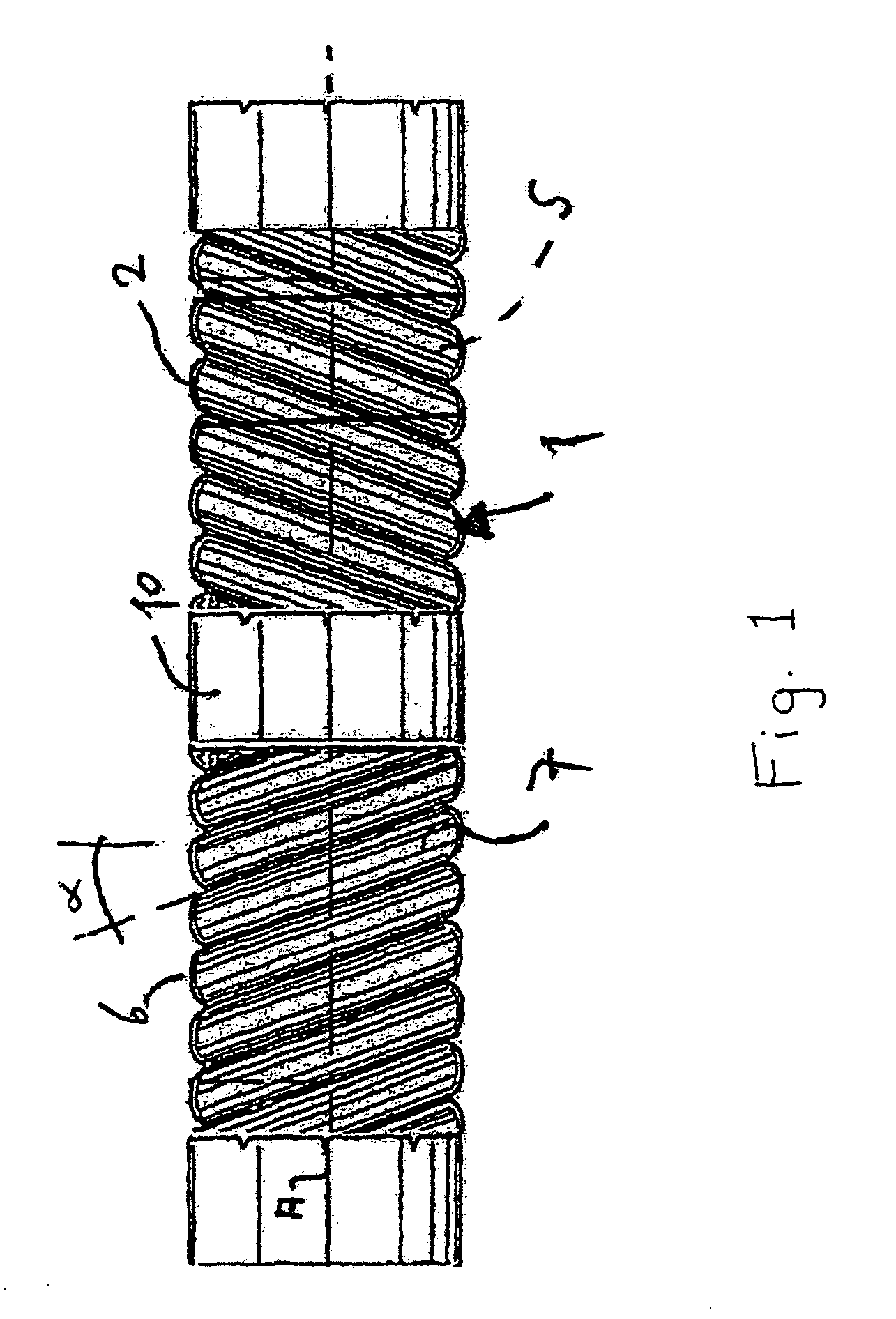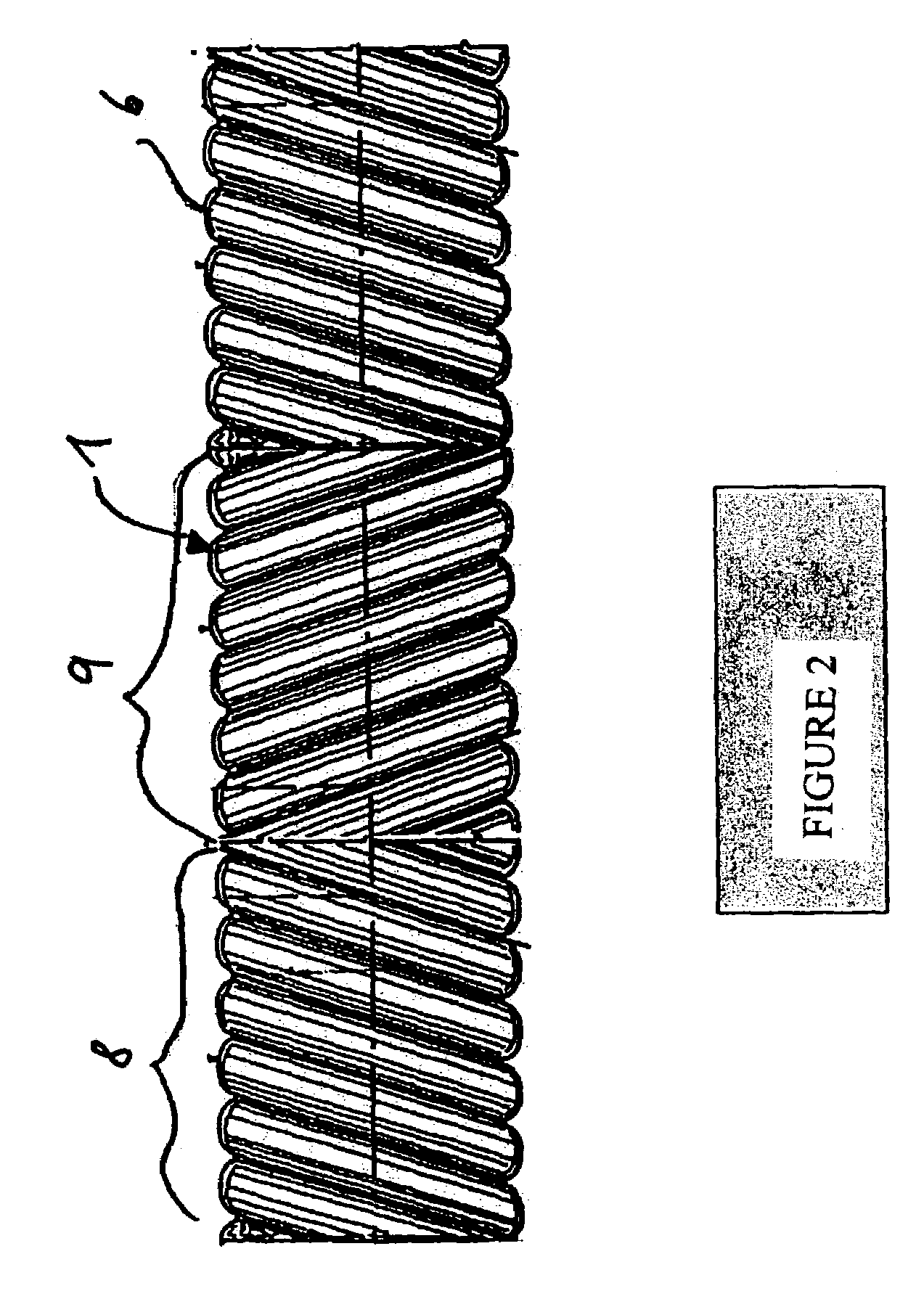Multilayer polymer hose line or tubing having reduced length variations
a polymer hose and multi-layer technology, applied in the direction of pipes, packaging, synthetic resin layered products, etc., can solve the problems of deteriorating tensile stiffness, high cost of production of three-layer tubing, and high cost of production of such pipes, and achieves easy production, low cost, and easy welding
- Summary
- Abstract
- Description
- Claims
- Application Information
AI Technical Summary
Benefits of technology
Problems solved by technology
Method used
Image
Examples
Embodiment Construction
[0057]The present invention relates to a polymer hose line or tubing which has an outer layer of a molding material of a harder polymer or a harder polymer mixture and an inner layer of a rubber-like polymer or a rubber-like polymer mixture. Additionally, the inner layer can be provided on the inside with a further “soft” layer of a thermoplastic adhesion-modified elastomer composition. Thus, according to the invention a material selection is made for the layers which yields in the finished compound a so-called “hard-soft-combination”. The inner layer or inner layers, respectively, being adjusted to be soft in comparison to the outer layer has or have a hardness of the starting polymer composition or mixtures in the range of from approximately 30 Shore A to 60 Shore D, especially of from 30 Shore A to 90 Shore A (each according to ISO 868).
[0058]According to the present invention, the outer layer 3 of the polymer hose line or tubing consists of a molding material based on (co)polyam...
PUM
| Property | Measurement | Unit |
|---|---|---|
| wt % | aaaaa | aaaaa |
| glass temperature | aaaaa | aaaaa |
| glass temperature | aaaaa | aaaaa |
Abstract
Description
Claims
Application Information
 Login to View More
Login to View More - R&D
- Intellectual Property
- Life Sciences
- Materials
- Tech Scout
- Unparalleled Data Quality
- Higher Quality Content
- 60% Fewer Hallucinations
Browse by: Latest US Patents, China's latest patents, Technical Efficacy Thesaurus, Application Domain, Technology Topic, Popular Technical Reports.
© 2025 PatSnap. All rights reserved.Legal|Privacy policy|Modern Slavery Act Transparency Statement|Sitemap|About US| Contact US: help@patsnap.com



